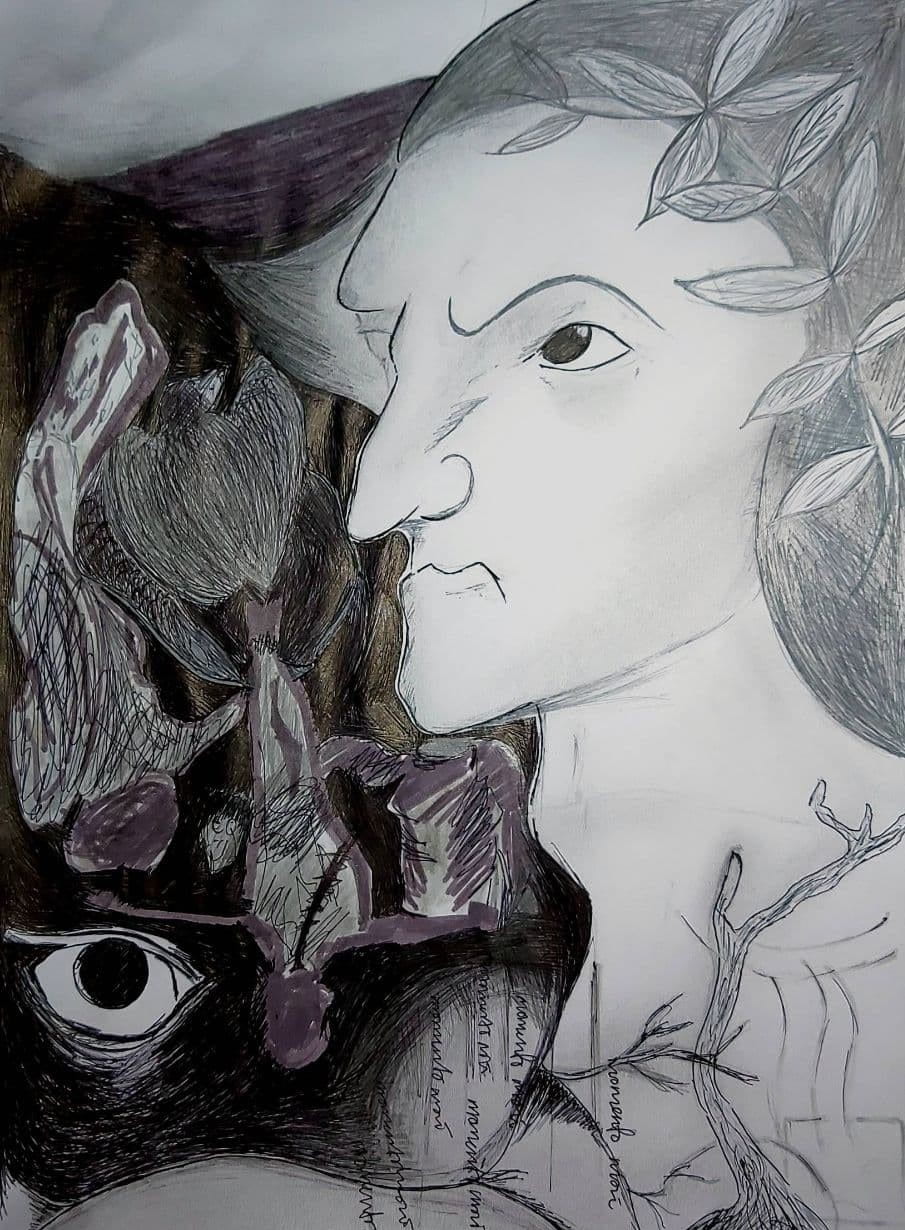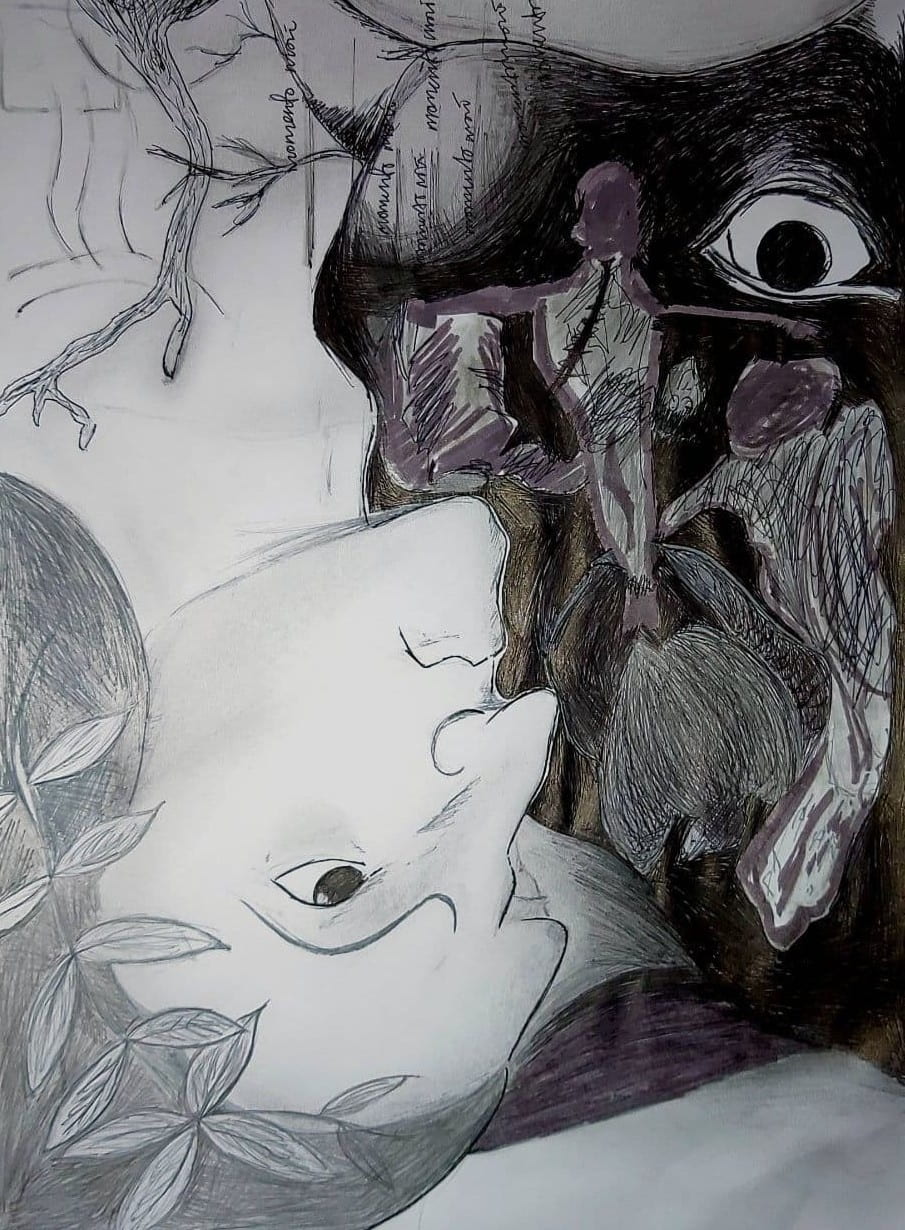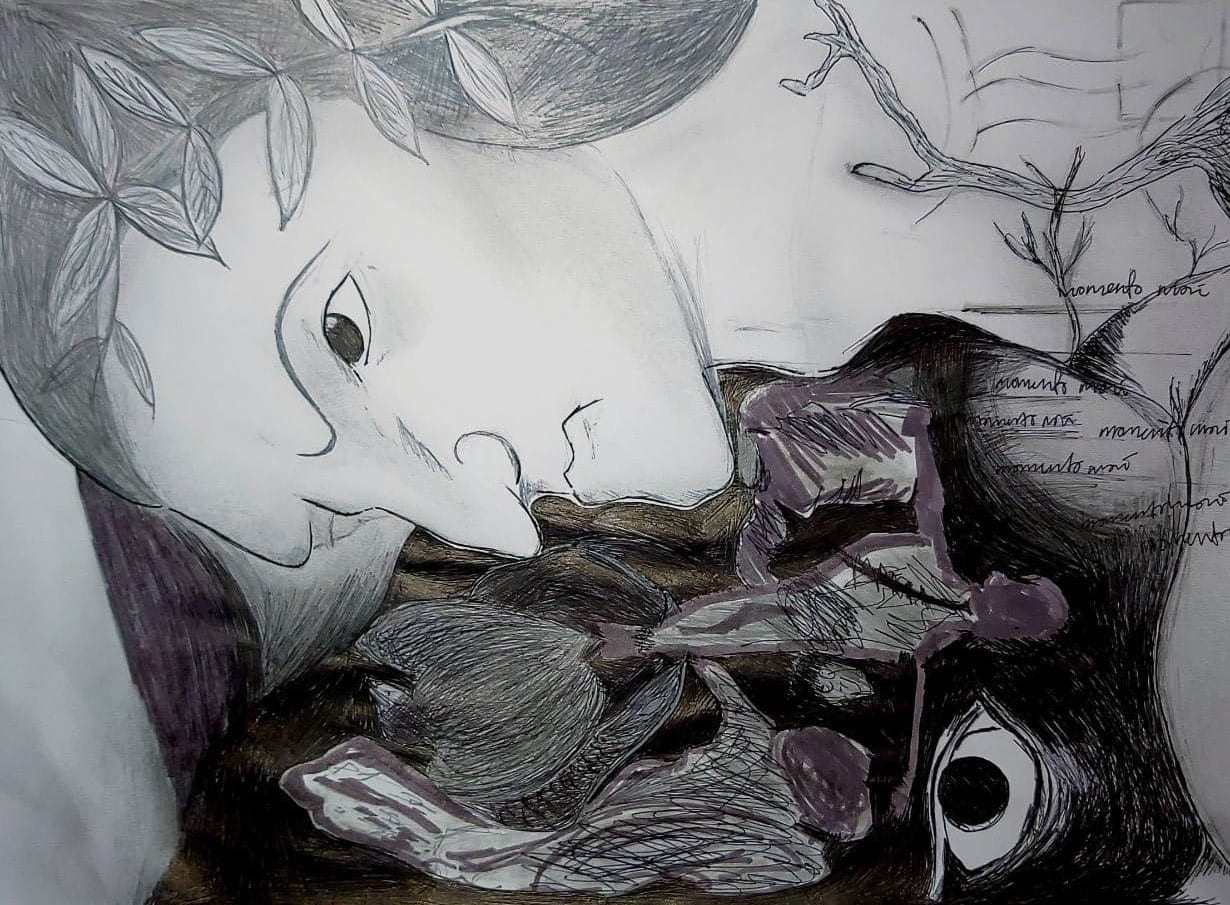CREATIVE PROJECT BY YAP JIA YI (’21)
The Inferno Postcard
Visual Art
An Interpretation of Inferno
Death, Mourning and Memory in Medieval Literature (YHU3345)
2021



Artist’s Remarks
Drawing inspiration from Canto 34, this postcard evokes Dante’s completed imaginative vision of the afterlife. Viewing the postcard upright, we see Hell depicted on the left, beginning with the gateway to Hell. Instead of presenting each separate circle of sin, the choice to conflate distorted images of the Harpies, scabbing and suffering souls, the beheaded soul, and the reptile (serpent/snake) to make up Lucifer’s face expresses the accumulation of sin. Specific to Canto 34, the harshness of the black ink reflects Dante’s failure to illustrate the sight of Lucifer through speech. Flipping the postcard over, we see how the upside down and barely legible image of Satan represents the perverse nature of Satan’s three faces as a parody of God’s love, omnipotence, and omniscience. I chose to focus on the face that was positioned on the left to express the evil that continues to control the powerless Satan (34.44-5). For Dante, the source of evil that makes up Hell remains elusive, and Satan is but a figurehead who represents pure evil and who is not excluded from the poetic justice of the contrapasso.
Dante’s side profile is intentionally drawn using a mix of grey ink and pencil to present a stark contrast against the mass of black ink and dark grey highlighter. Together with Dante’s right eye looking up towards Heaven (which is more in focus than his left eye that is veiled during his witnessing of punishment and sin), the contrast expresses the commediain two ways: one, the Inferno as a parody of the divine, and two, Dante’s escape from Hell unscathed. Dante states, “I did not die and I did not remain alive; think now for yourself, if you have wit at all, what I became, deprived of both” (34.25-7). This statement implies a shift “from the experience of sin to the recovery of original justice” (577). This shift is also expressed in the canto’s play on time, space and geography:
On this side he fell down from Heaven; and the
dry land, which previously extended over here, for
fear of him took the sea as a veil,
and came to our hemisphere; and perhaps what
does appear on this side left this empty space in
order to escape from him, and fled upward. (34.121-126)
To achieve the same destabilizing effect on the viewers as did the canto’s manipulation of directionality (through phrases like “fell down,” “previously extended,” “fled upward” which require mental gymnastics on readers’ part), the intentional upright sketching makes illegible Lucifer’s face by focusing instead on Dante’s entry to Hell and his final escape, and one can only discern Lucifer’s haunting stare when flipping Dante’s portrait upside down.
Finally, the postcard’s interpretative nature expresses the commedia in the Inferno as an immortalization the word of the divine (audaciously so through the words of Dante the poet) that is at once elusive in its reference to the source of evil and clear in the call for recognition and rejection of sin. The absurdity of the postcard compels its recipient to view the world through Dante’s critical humour, albeit in another time and space.
REFERENCES
Alighieri, Dante. The Divine Comedy of Dante Alighieri: Inferno. Translated by Robert M. Durling. Oxford: Oxford University Press, 1996.
